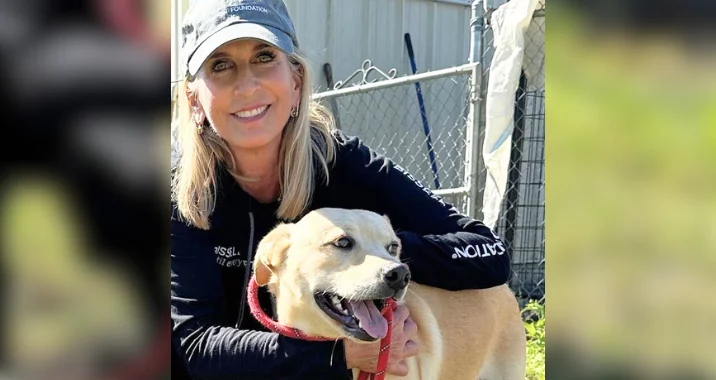Reducing the Trauma of Pets in Shelters
Imagine if one day your family was gone. You were taken to a place where other people were all around you, crying and frustrated. You have no idea why life just suddenly changed. A guy across the aisle from you hates you and you are unsure why, but he keeps throwing himself against the bars and yelling. Friendly people come and give you food and water, but they are not your people. They sometimes take you out to walk, but you are so nervous you can’t enjoy it. You hope your family will come for you soon, but they don’t. Shelter pets experience this trauma every day.
Our nation’s animal shelters are intended for pets that have nowhere else to go. They are designed for a short length of stay. In fact, in the past most animals did not leave alive. Today, our nation is more aware than ever that pets are sentient beings. We advocate for them, spend billions of dollars caring for them, and for many of us, they are family. From the small rural to the big metropolitan, our animal shelters are working to get every possible pet out of the shelter alive and in loving homes. While this seems like incredible progress, it has caused a new set of issues with length of stay.
Pets mentally deteriorate in shelters. It is a fact. This is less of an issue for some shelters because they have staff and resources to prevent this from happening. However, for the majority of shelters, it is a daily reality. A healthy pet that enters a shelter likely begins deteriorating mentally and physically within a few days. With the volume of pets entering shelters in 2021, we must remain focused and creative in moving them through the process. The alternative is a pet that entered the shelter as a highly adoptable pet, but leaves the shelter riddled with anxiety and new fears as a behavioral case.
Shortening Length of Stay in Shelters
We need to remember the original intent of animal shelters is short-term holding. As an industry, our mission is shifting to avoid pets entering the shelter until all other options have been exhausted. Once in the shelter system, foster networks and solid enrichment programs have been developed, but the shelter is still intended for short-term residency. How do we fix that with a growing population of pets entering the shelter that are staying longer? How do we help shelters that lack resources and staff to provide enrichment and develop lifesaving foster programs?
Getting Pets Back to Owners
Return-to-owner programs are paramount. The answer lies in shelter-to-shelter outreach and community engagement. There are tools that keep pets out of shelters, even where resources are limited. Mike Wheeler, director of Cabot Animal Support Services in Arkansas, has developed an admirable return-to-owner program. His animal control officers and staff work in the field to take pets home. The community is engaged, and instructions provided to them when they find a lost pet, save tax dollars and lives. Wheeler often has enough space in his small shelter to help other shelters and take in animals that are truly in need.
Pet Rehoming Software
Another powerful tool is Home-to-Home rehoming pet software, which incorporates owner-to-owner adoption with the community shelter as the platform. Shelters like Greenville County Animal Care Services in South Carolina have staff assigned specifically to counsel community members wanting to surrender pets on using the software rather than bringing pets into the shelter.
Transport Partnerships
Developing both in-state and regional transport relationships can keep pets moving through your shelter. However, it’s critical not to wait until you are over capacity before establishing transport relationships. Your established transport partners should be taking a mix of pets, not just easily adoptable pets. Sometimes simply rotating pets from one shelter to another drastically increases their likelihood of adoption. Consider eliminating partners that refuse to take larger dogs to ensure that your partners receive a good mix of pets. While there are barriers in some areas of the country for bully breeds, these shelter partners can still take large dogs. Becoming a stickler for fair transport will earn you lasting partnerships.
Finally, we can never lose sight of the individual. Each pet deserves daily evaluation and interaction. Is the pet’s behavior deteriorating? Is there something staff can do to improve daily care? Would this pet do better in a different facility? Is this pet safe for adoption if someone walked in today to adopt him or her? Pets should not be suffering physically or mentally in our nation’s animal shelters. There is no excuse. Remaining within your organization’s capacity for care is vital to the health of each individual pet.
Check out the resources below and begin your community campaign today:
Capacity for Care:
- https://www.sheltermedicine.com/library/resources/?r=overview-of-capacity-for-care-c4c
- https://www.uwsheltermedicine.com/library/resources/capacity-for-care-c4c-magic-number-calculator
Return-to-Owner Community Graphics: The graphic below is offered in both English and Spanish. Download and share this graphic on your social channels. Don’t forget to tag Cathy Bissell and BISSELL Pet Foundation.
To download, click on your preferred graphic below. Then, right-click on the image and select “Save Image As” to save it to your device.
English and Spanish Home to Home: https://home-home.org/
Extraordinary Outcomes Toolkit: https://www.bissellpetfoundation.org/extraordinary-outcomes-toolkit/
Safety Net Programs: https://www.aspcapro.org/keeping-pets-homes/safety-net
Return-to-Owner Programs:
- https://www.aspcapro.org/keeping-pets-homes/return-owner
- https://www.maddiesfund.org/using-technology-to-increase-return-to-owner.htm?p=topic1038
Deterioration of Pets in Shelters:
- https://www.petfinder.com/pro/for-shelters/deterioration-shelter-dog/
- https://www.maddiesfund.org/behavior-problems-and-long-term-housing.htm
Shelter Standards: https://www.sheltervet.org/assets/docs/shelter-standards-oct2011-wforward.pdf





